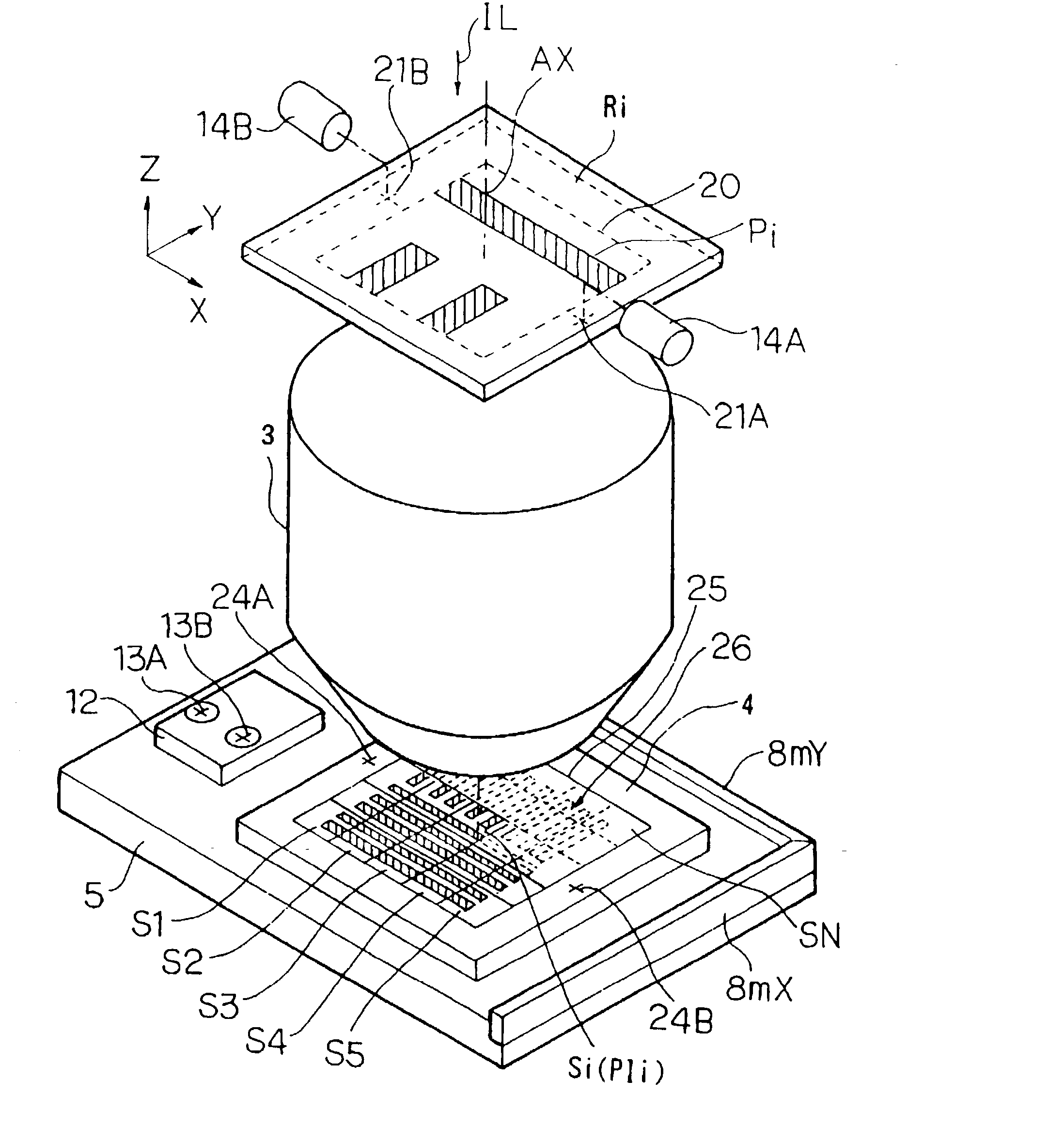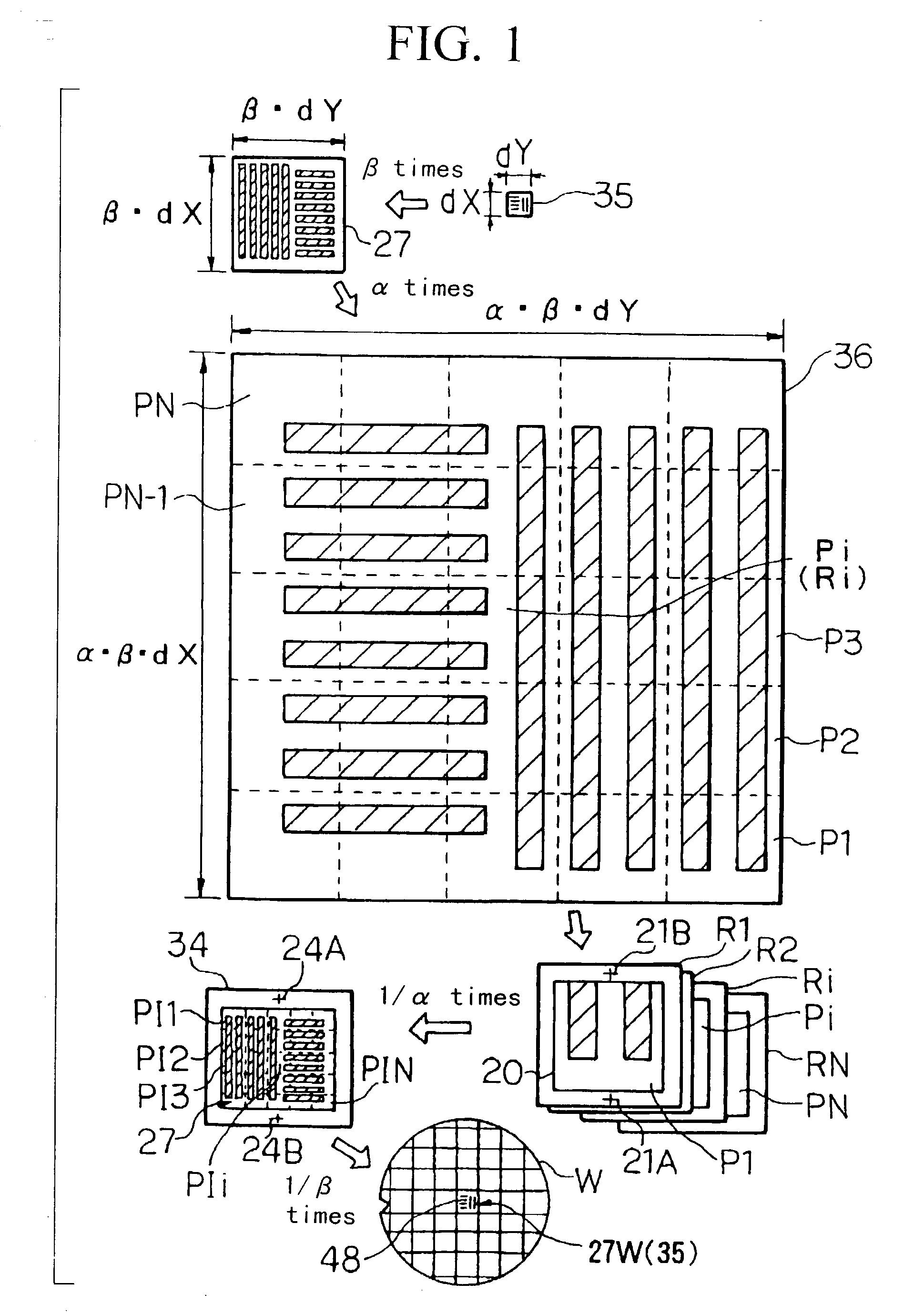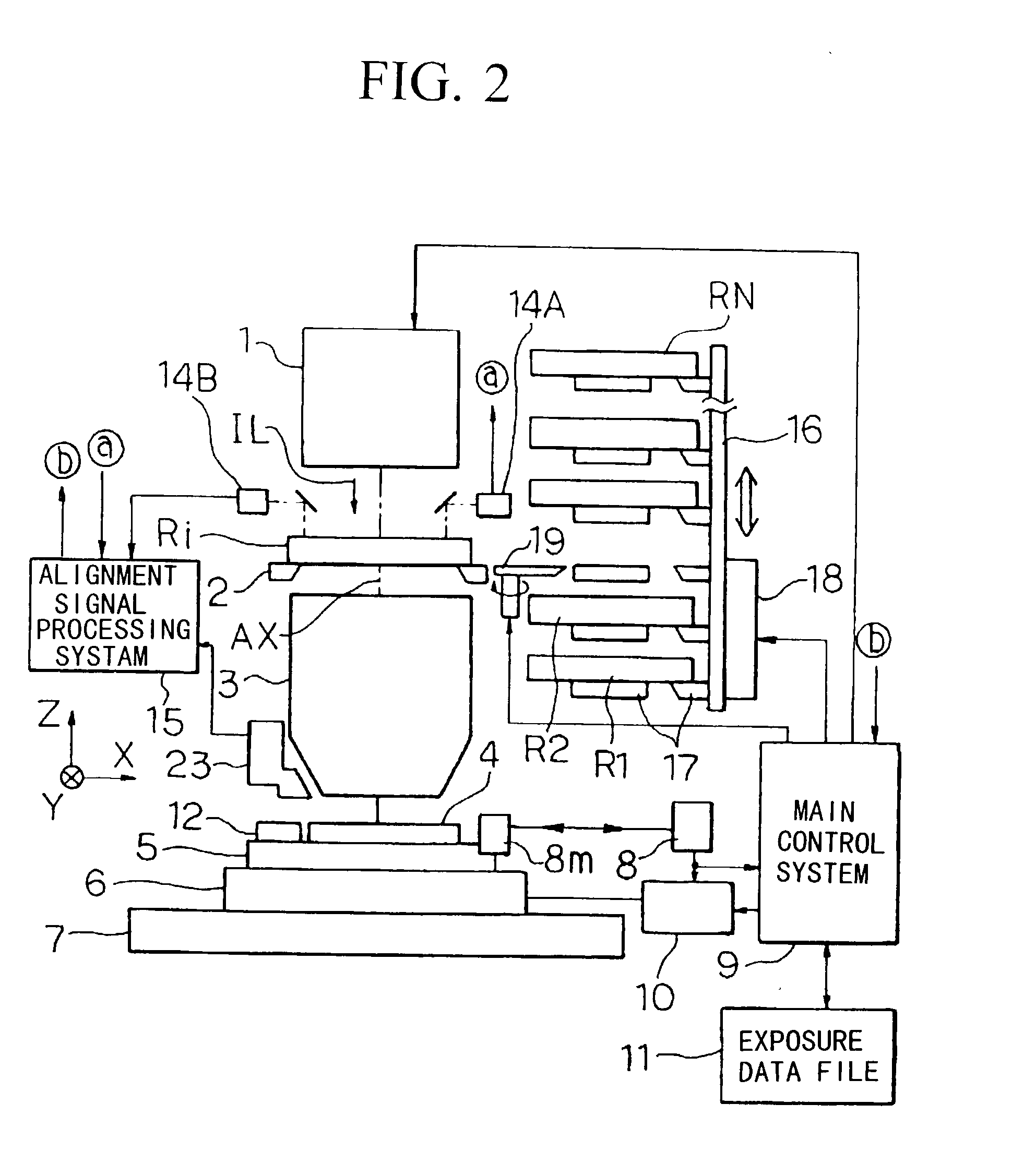Photomask producing method and apparatus and device manufacturing method
- Summary
- Abstract
- Description
- Claims
- Application Information
AI Technical Summary
Benefits of technology
Problems solved by technology
Method used
Image
Examples
first embodiment
[0079] [First Embodiment]
[0080] The first embodiment of this invention will now be described with reference to the accompanying drawings.
[0081] FIG. 1 is a diagram illustrating production steps for a photomask according to the first embodiment of this invention. In FIG. 1, a photomask to be produced is a working reticle 34 which is used at the time of actually manufacturing a semiconductor device. This working reticle 34 has an original pattern 27 for transfer formed of chromium (Cr), molybdenum silicide (MoSi.sub.2 or the like) or another mask material on one surface of a transmission substrate of quartz glass or the like. Two alignment marks 24A and 24B are formed in such a way as to sandwich the original pattern 27.
[0082] Further, the working reticle 34 is used in reduction projection of 1 / .beta. (.beta. is an integer, a half integer or the like greater than 1, and is 4, 5 or 6 or the like as one example) via the projection optical system of an optical projection exposure apparat...
second embodiment
[0129] [Second Embodiment]
[0130] A second embodiment of this invention will now be described with reference to the accompanying drawings.
[0131] FIG. 7 is a diagram illustrating production steps for a photomask according to the second embodiment of this invention. In FIG. 7, as in FIG. 1, a photomask to be produced is the working reticle 34 that is used at the time of actually manufacturing a semiconductor device. This second embodiment differs from the first embodiment in that M sets (M being an integer greater than 2) of master reticles as parent masks are prepared and those plural sets of master reticles Ri, Qi . . . are used to produce the working reticle 34.
[0132] In FIG. 7, as in FIG. 1, first, the circuit pattern 35 is magnified by .beta. to form the original pattern 27 that has a rectangular area whose perpendicular sides have widths of .beta..multidot.dX and .beta..multidot.dY, on image data and then the original pattern 27 is magnified by .alpha. to form the parent pattern ...
third embodiment
[0159] [Third Embodiment]
[0160] A third embodiment of this invention will now be described with reference to the accompanying drawings.
[0161] FIG. 13 is an explanatory diagram of a method of producing a photomask according to the third embodiment of this invention. As shown in FIG. 1C and FIG. 1D, photomasks to be produced in this example are working reticles WR, WR1 that are used at the time of actually manufacturing a semiconductor device. On those working reticles WR and WR1, patterns Pr equivalent to two alignment marks are so formed as to sandwich the original pattern, and a pattern Pw which becomes a wafer mark after being transferred onto the wafer is formed in the original pattern.
[0162] Further, the working reticles WR, WR1 of this example are used in reduction projection of 1 / .beta. via the projection optical system of an optical projection exposure apparatus as per the first and second embodiments.
[0163] The working reticle WR in this example is produced by forming a thin...
PUM
 Login to View More
Login to View More Abstract
Description
Claims
Application Information
 Login to View More
Login to View More - R&D
- Intellectual Property
- Life Sciences
- Materials
- Tech Scout
- Unparalleled Data Quality
- Higher Quality Content
- 60% Fewer Hallucinations
Browse by: Latest US Patents, China's latest patents, Technical Efficacy Thesaurus, Application Domain, Technology Topic, Popular Technical Reports.
© 2025 PatSnap. All rights reserved.Legal|Privacy policy|Modern Slavery Act Transparency Statement|Sitemap|About US| Contact US: help@patsnap.com



